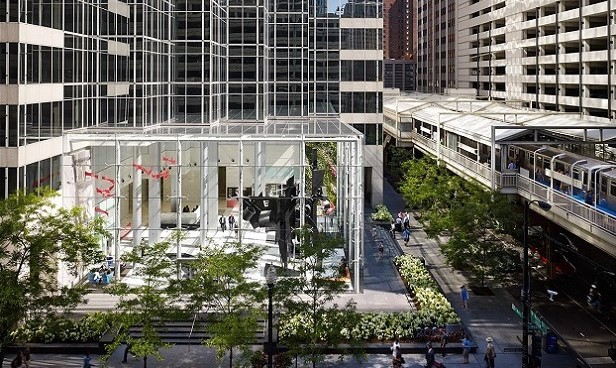 200 W. Madison in Downtown Chicago was recently awarded a LEED Platinum certification, a big draw for environmentally-conscious employees.
200 W. Madison in Downtown Chicago was recently awarded a LEED Platinum certification, a big draw for environmentally-conscious employees.CHICAGO—The Chicago office market has once again taken the top spot in the annual US Green Building Adoption Index by CBRE and Maastricht University. It first won this recognition last year after placing second in 2016. The source of its success can be partly traced to a former leader.
“Mayor Daley took this on and worked to change how the city was perceived,” Neil Pendleton, managing director, asset services, CBRE, tells GlobeSt.com. Installing a green roof on City Hall in 2001 was initially scoffed at by many, but soon developers, landlords and lenders saw how such features saved money and improved the quality of urban life.
CBRE and Maastricht define “green” office buildings as those that hold either an EPA ENERGY STAR label, USGBC LEED certification or both.
“More and more people are aware of the costs of energy,” Pendleton says, who compares the growing acceptance of energy efficiency and sustainability to the progress made under the Americans With Disabilities Act. Ensuring access for the disabled was considered onerous when the ADA was enacted in 1990, but now its requirements have “become very much the expectation.”
Chicago's progress is also part of a national trend. Researchers studied the 30 largest metros and found green certified office space has reached 41% of market totals – an all-time high for the five-year study. According to the report, 11.5% of all buildings surveyed are ENERGY STAR labeled, while 5.2% of buildings are LEED certified, both significant boosts over last year.
Chicago, along with many other top markets, helped push the real estate community to adopt green strategies by instituting a benchmarking ordinance in 2013. It requires large property owners to track and publicize their energy use. And many now see this as a way to market properties to environmentally-conscious tenants and employees.
“From moving to 100% renewable energy in our public buildings, to supporting our private partners as they work to reduce emissions, Chicago is showcasing to the world the impact that cities can have on climate change for their residents and for people around the world,” says Chicago Mayor Rahm Emanuel. “This national recognition is a testament to the progress and success of our efforts to improve our environment while bettering communities across Chicago.”
And with nearly 70% of its space green certified, Chicago stretched out its lead. Sixty-four percent of the market in second-place San Francisco was green certified, and that 6% was the largest ever recorded in the Green Building Adoption Index. Atlanta kept the third spot with more than 58% certified, while a surging Los Angeles claimed fourth – up from sixth last year. Minneapolis was again fifth with 55%.
Pendleton says the attitude of Chicago landlords is “if we're going to do this, let's be bold about it.”
Want to continue reading?
Become a Free ALM Digital Reader.
Once you are an ALM Digital Member, you’ll receive:
- Breaking commercial real estate news and analysis, on-site and via our newsletters and custom alerts
- Educational webcasts, white papers, and ebooks from industry thought leaders
- Critical coverage of the property casualty insurance and financial advisory markets on our other ALM sites, PropertyCasualty360 and ThinkAdvisor
Already have an account? Sign In Now
*May exclude premium content© 2025 ALM Global, LLC, All Rights Reserved. Request academic re-use from www.copyright.com. All other uses, submit a request to [email protected]. For more information visit Asset & Logo Licensing.








